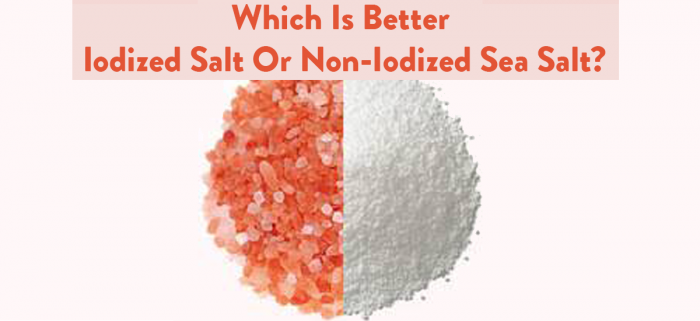Which Is Better: Iodized Salt Or Non-Iodized Sea Salt?
Origin of Iodized salt
A bit of background story regarding the role of Iodine in the functions of a human body, it needs traces of Iodine in the production and functions of the body that includes growth, metabolism, muscle and nerve function, reproduction, controls the body temperature and blood cell production. Here’s how iodine is found and gets to our body either in the form of the Iodized salt, bread,
Iodine is found in soils = Plants absorb the Iodine from the soil = Animals and humans consume it.
Iodine’s functions in the Human Body
Thyroid glands are said to be the greatest iodine store in the body. It requires iodine to produce hormones it emits. The lack of iodine in one’s diet leads to Iodine Deficiency Disorder, many people in the world suffer from IDD which leads to mental retardation, hyperthyroid, hypothyroid, other developmental and growth abnormalities. Major deficiencies may result in complications during childbirth and miscarriages. Research carried out in the year 2007 has been able to estimate that about 1 billion people ‘suffered from Iodine Deficiency Disorder and over 38 million babies are born with some sort of neurological damage per year. Slight deficiencies affect the learning ability of a major fraction of the population.
Furthermore, lack of iodine in your diet may perhaps lead to intolerance of cold, gastrointestinal diseases, skin abnormalities, etc.
Iodized salt vs. Non-iodized sea salt
Iodized salt was initially released in America, in the year 1924 for the sake of curing and preventing Goiter, which had taken its toll on the population of the United States of America which covered a large area starting from the Great Lakes to the Pacific Northwest. Goiter is still present in the highlands of South America, Australia, New Zealand, and various European countries due to the scarcity of Iodine in the region.
Iodine is found in dietary supplements such as fruits and vegetables cultivated on a soil which is rich with iodine, dairy products may have traces of iodine if the animals had grazed upon plants (grown in iodine-rich soils), and iodized salt.
On the contrary, non-iodized salt or simply, sea salt which is found in fast foods usually does not have any iodic content in it. High intake of Sodium may be fatal to health.
How much Iodine should one ingest?
Here’s a list to show you how much iodine should be consumed,
At minimum,
An adult should consume about 150 mcg.
A pregnant woman should consume 220 mcg.
At maximum,
200 mcg for the children of age 1-3.
300 mcg for the children of age 4-8.
600 mcg for the children of age 9-13
900 mcg for the teens of age 14-18
The average intake of an adult which is considered safe is 1,100 mcg per day.
Now that you have been made aware of the aspects of non-iodized Sea salt and Iodized salt, you can make the optimal decision regarding what additives should either be present or omitted from your regular diet.

